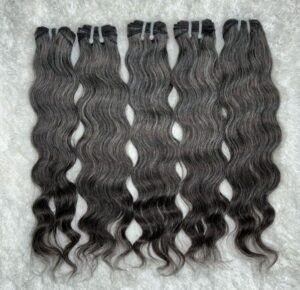Recovery methods are everywhere in fitness circles, promising faster muscle repair, less soreness, and improved performance. Among the frontrunners are contrast therapy—alternating hot and cold exposure—and cold immersion, typically via ice baths or cryotherapy.
Each method has its fans, but which actually works better? Let’s break it down with insights from a personal trainer in Brockley who’s been helping clients recover smartly around Brockwell Park for years. If you’re hitting tough training blocks and want to bounce back quicker, understanding the nuance between these techniques is essential.
What Is Contrast Therapy?
Contrast therapy involves alternating between hot (around 38–40 °C) and cold (10–15 °C) water, usually through a shower or a two-tub setup. You cycle between the two temperatures to stimulate blood flow and flush out fatigue.
The Physiology Behind It:
-
Hot Water = Vasodilation: Blood vessels open up, improving nutrient delivery.
-
Cold Water = Vasoconstriction: Vessels tighten, helping push waste products out of fatigued muscles.
-
Cycling through both creates a sort of vascular “pump,” promoting faster tissue recovery and circulation.
Example Session Template:
-
2–3 minutes hot
-
30–60 seconds cold
-
Repeat for 3–5 rounds, ending on cold to cap inflammation.
Benefits of Contrast Therapy
-
Circulatory Supercharge: The rapid hot-cold switch kicks blood flow into overdrive.
-
Time-Efficient: You can finish an entire session in a 10–15-minute shower.
-
Beginner-Friendly: The warm phases reduce the shock of cold exposure, making it more accessible.
Limitations of Contrast Therapy
-
Milder Inflammation Control: The cold segments are brief and less intense, making them less potent than full cold immersion.
-
Setup Can Be Tricky: Optimal results require precise temperature control, which isn’t always easy at home.
What Is Cold Immersion?
Cold immersion is more intense and straightforward. You submerge your body in cold water or stand in a cryotherapy chamber to reduce inflammation and blunt soreness.
Two Popular Types:
-
Ice Baths: A full-body soak in water at 10–15 °C, typically lasting 8–12 minutes.
-
Cryotherapy: Exposing the body to –110 °C to –140 °C air for 2–3 minutes in a chamber.
For exact temperature targets, safety tips, and session timing, refer to the complete cold therapy for recovery guide.
Benefits of Cold Immersion
-
Superior Inflammation Control: Longer cold exposure leads to better swelling and soreness reduction.
-
Pain Relief: Cold slows nerve conduction, delivering a temporary analgesic effect.
-
Cryo High: Cryotherapy often triggers an endorphin rush, boosting your mood and alertness.
Limitations of Cold Immersion
-
Not for the Faint-Hearted: The shock of full-body cold is intense, especially for newcomers.
-
Logistical Barriers: You need ice, tubs, or access to a cryotherapy chamber.
-
Can Impair Muscle Growth: Overusing cold, especially right after strength training, may blunt adaptation signals.
Head-to-Head Comparison
| Feature | Contrast Therapy | Ice Baths/Cryo |
|---|---|---|
| Inflammation Control | Moderate | High |
| Circulation Boost | Very High | Moderate |
| Time Requirement | 10–15 minutes | 8–12 minutes (ice) / 2–3 (cryo) |
| Equipment Needs | Shower or tubs | Ice supply or cryo chamber |
| Mental Toughness Level | Low to Moderate | High |
Which One Is Right for You?
-
Training Multiple Days in a Row? Ice baths or cryo provide the inflammation control needed after brutal lifting or conditioning days.
-
Low on Time or Just Starting Out? Go for contrast showers. They’re accessible, effective, and don’t require any special gear.
-
Using Both? Smart athletes often mix them—contrast therapy for lighter sessions and full immersion on the heaviest or most fatiguing days.
Expert Take from Brockley’s Recovery Coach
As a personal trainer based in Brockley, working with clients through tailored sessions in Brockwell Park, I often help individuals discover the recovery rhythm that best matches their lifestyle, training goals, and stress levels.
Both cold immersion and contrast therapy are valuable tools—but they aren’t interchangeable. The key is not blindly following trends, but understanding your body’s needs and adjusting your recovery game accordingly.
For a detailed breakdown of temperatures, session durations, safety concerns, and more, read the full cold therapy for recovery guide.
Final Thoughts: Recover Smarter, Not Just Colder
Whether you’re training for performance, aesthetics, or just staying active, your recovery strategy should evolve alongside your goals. Use contrast therapy when time is short or soreness is creeping in midweek. Deploy cold immersion for bigger recovery demands. Whatever method you choose, do it with intention—and consistency.
If you’re training around South London and need guidance on building a recovery routine that actually fits your lifestyle, speak to a coach who knows both programming and practicality. Choose smart. Recover smarter.
- Contrast Therapy vs. Cold Immersion: Which Delivers Better Results?
- Discover whether contrast therapy or pure cold immersion (ice baths & cryotherapy) delivers better recovery—compare inflammation control, circulation boost, and practicality.
- Contrast therapy, cold immersion, ice baths, cryotherapy, recovery methods comparison, inflammation control, athletic recovery, fitness recovery hacks
Related posts:
 How to Lose Weight Fast Naturally and Permanently ?
How to Lose Weight Fast Naturally and Permanently ?
 Top 7 Foods to Lower High Blood Pressure and Boost Heart Health Naturally
Top 7 Foods to Lower High Blood Pressure and Boost Heart Health Naturally
 10 Proven Ways to Reduce Stress and Improve Mental Health Naturally
10 Proven Ways to Reduce Stress and Improve Mental Health Naturally
 Gynecomastia Surgery and Male Confidence: Abu Dhabi’s Holistic Approach
Gynecomastia Surgery and Male Confidence: Abu Dhabi’s Holistic Approach
 Understanding Diabetic Retinopathy and Its Ayurvedic Approach
Understanding Diabetic Retinopathy and Its Ayurvedic Approach
 Qatar Corniche Dhow Cruise: A Traditional Voyage Along Doha’s Iconic Waterfront
Qatar Corniche Dhow Cruise: A Traditional Voyage Along Doha’s Iconic Waterfront
 Specialist Deformity Correction Center India | Arunalaya: Tailored Care for Complex Conditions
Specialist Deformity Correction Center India | Arunalaya: Tailored Care for Complex Conditions
 Expert Rehab – Best Physiotherapy Services in Inderpuri delhi
Expert Rehab – Best Physiotherapy Services in Inderpuri delhi








